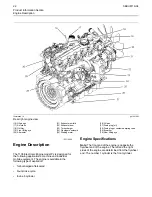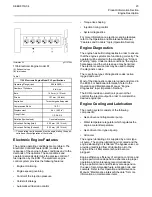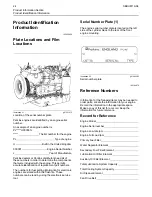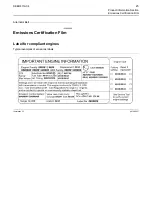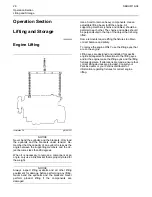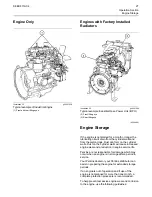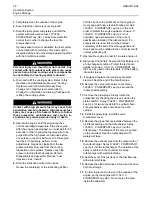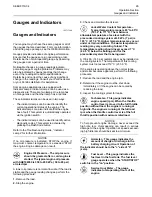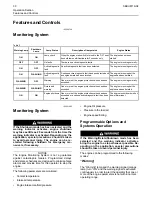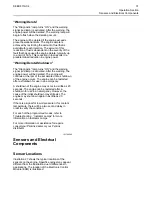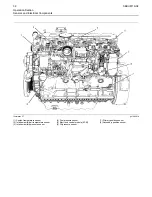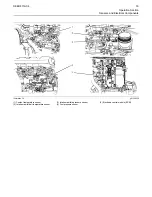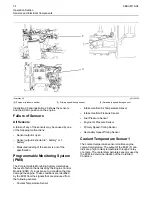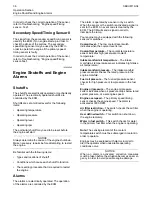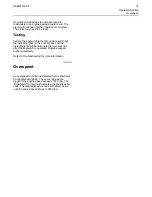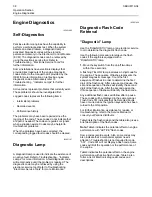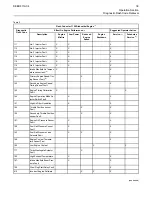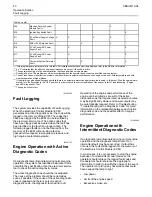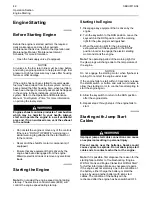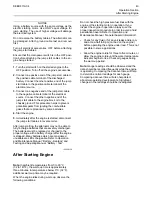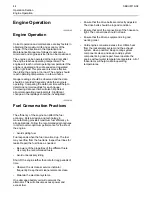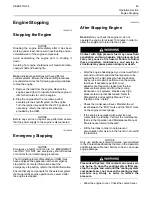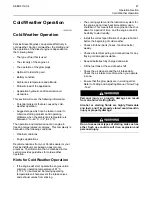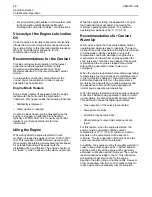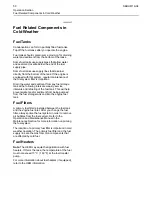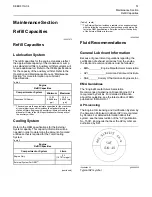
In order to check the correct operation of the sensor,
refer to Troubleshooting, “Engine speed/Timing
sensor - Test”.
Secondary Speed/Timing Sensor 8
The signal from the secondary speed/timing sensor is
used by the ECM (5) on engine start-up in order to
check the stroke of the pistons. The secondary
speed/timing sensor may be used by the ECM in
order to operate the engine if the primary speed/
timing sensor is faulty.
In order to check the correct operation of the sensor,
refer to Troubleshooting, “Engine speed/Timing
sensor-Test”.
i02858345
Engine
Shutoffs
and
Engine
Alarms
Shutoffs
The
shutoffs
are
electrically
operated
or
mechanically
operated.
The
electrically
operated
shutoffs
are
controlled
by
the
ECM.
Shutoffs
are
set
at
critical
levels
for
the
following
items:
• Operating temperature
• Operating pressure
• Operating level
• Operating rpm
The particular shutoff may need to be reset before
the engine will start.
NOTICE
Always determine the cause of the engine shutdown.
Make necessary repairs before attempting to restart
the engine.
Be familiar with the following items:
• Types and locations of shutoff
• Conditions which cause each shutoff to function
• The resetting procedure that is required to restart
the engine
Alarms
The alarms are electrically operated. The operation
of the alarms are controlled by the ECM.
The alarm is operated by a sensor or by a switch.
When the sensor or the switch is activated a signal is
sent to the ECM. An event code is created by the
ECM. The ECM will send a signal in order to
illuminate the lamp.
Your engine may be equipped with the following
sensors or switches:
Coolant level
– The low coolant level switch
indicates when the coolant level is low.
Coolant temperature
– The coolant temperature
sensor indicates high jacket water coolant
temperature.
Intake manifold air temperature
– The intake
manifold air temperature sensor indicates high intake
air temperature.
Intake manifold pressure
– The intake manifold
pressure sensor checks the rated pressure in the
engine manifold.
Fuel rail pressure
– The fuel rail pressure sensor
checks for high pressure or low pressure in the fuel
rail.
Engine oil pressure
– The engine oil pressure
sensor indicates when oil pressure drops below rated
system pressure, at a set engine speed.
Engine overspeed
– The primary speed/timing
sensor checks the engine speed. The alarm is
activated at 3000 RPM.
Air filter restriction
– The switch checks the air filter
when the engine is operating.
User defined switch
– This switch can shut down
the engine remotely.
Water in fuel switch
– This switch checks for water
in the primary fuel filter when the engine is operating.
Note:
The sensing element of the coolant
temperature switch must be submerged in coolant in
order to operate.
Engines may be equipped with alarms in order to
alert the operator when undesirable operating
conditions occur.
NOTICE
When an alarm is activated, corrective measures
must be taken before the situation becomes an emer-
gency in order to avoid possible engine damage.
36
SEBU8119-04

